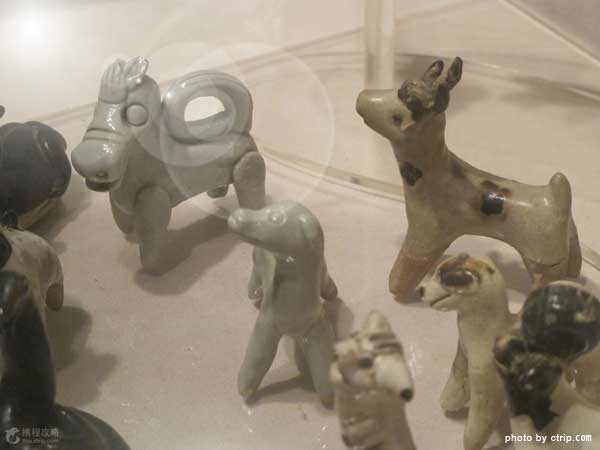Southern Song Dynasty Guan Kiln Museum is located in the western piedmont of Tortoise Hill, the southern margin of Yuhuang Mountain, lying on the south edge of West Lake scenic area in Hangzhou. With the tasteful display, substantial content and comfortable environment, it is the first unique museum themed on ceramics in China. It covers an area of about 15,000 square meters, of which the construction area is 4364 square meters. It consists of two parts: the exhibition hall and the Kiln ruin sites on an altar.
Southern Song Dynasty Guan Kiln Museum is officially open to the public in 1992. With the exploration and protection work of Hangzhou historical and cultural resources being deepened constantly, the museum went through further expansion and renovation in 2002 for the exhibition. After being transformed, the museum displays the charm and character of the Southern Song Dynasty Guan Kiln in all-round. It not only highlights the history, technology and aesthetic value of the kiln, but also fully reflects the closed relationship of the kiln and the Palace Cultural and social folk customs of Southern Song Dynasty.
Here you can not only admire fine celadon of Southern Song Dynastya and the kiln ruin sites, but also make pottery wares by yourself. The museum has beautiful environment, and it is not too crowded. It is like a small city park. It is suitable for children to have fun.
Enter into the historical relics exhibition hall, the first thing oncoming is an stone with the inscription “青瓷故乡(meaning the hometown of celadon)”. The ground is covered by a transparent glass with ceramic fragments in it. The exhibition hall has quite rich variety of items on display, including imperial celadon ware and ordinary porcelains of the Southern Song Dynasty, interesting small gadgets. The making of celadon ware in Southern Song Dynasty is at it peak. It is an enjoyable thing to admire all kinds of old chinawares here. There are some experience projects offering to visitors to have fun and get to know more about the things about ancient porcelain. For example, they can learn how to piece the broken porcelain together again like an archaeologists; you can get access to know more knowledge and culture of ancient porcelain by public touch-screen computers; in the nearby pottery center, you can also learn how to make pottery or decorates porcelains with coloured drawings by yourself. There are some temporary themed exhibitions, apart from the regular displays.
Walk out of the exhibition hall and go northeastwards, you will come to the Guan kiln ruin sites. The ruin site is composed of a dragon kiln and a workshop the two parts. About 800 years ago, here fired out countless fine porcelains. Today, some recovery models were built on the original sites, and you can have a visual impression about what the layout of a kiln workshop of traditional manufacture looks like and how the manufacturing procedure of China porcelain was. The most impressive thing would be the ruins of the dragon kiln, which leaning straight upwards against the terrain.
Finally, you walk to the history exhibition hall of the Southern Song Dynasty, where displays all aspects of the history of the Southern Song Dynasty, from the multiplication table to the compass of suspension method. Hangzhou used to be the capital of Southern Song Dynasty. One can get a general impression of the Southern Song Dynasty history in this place. After the museum tour, you can continue to the west of the Eight Diagrams Field Heritage Park, and a farm ecological park nearby for a visit if you have spare time.
due to its important contributions on promoting ceramic culture and reproducing the view of ancient Hangzhou, the Southern Song Guan Kiln Museum has grown to be a highly praised and appreciated ceramic culture center and a brilliant historic landmark of Hangzhou, with integrating collection, display, education and entertainment.
How to Get to Southern Song Guan Kiln Museum in Hangzhou
Take Bus Route Y3, 42, 87, 139, 271 to Shijiashan Station (施家山站). It is recommended to spend one hour to visit the place.

